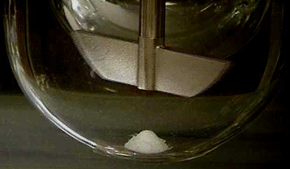Drug dissolution studies are often reported in the literature as:
(1) Influence of formulation parameters on dissolution rate … (2) Formulation and evaluation of extended-release matrix tablets using factorial design (3) Development of novel … controlled-release tablets … and the effect of co-excipients on in vitro drug release rates. (4) Change in the drug release behavior of tablets …
These are few examples of partial titles selected at random from a quick review of the literature. The results and conclusions drawn from these studies are all based on in vitro drug dissolution testing only using the paddle or basket apparatuses. There is no harm in conducting in vitro dissolution testing and drawing conclusions from such studies based on the obtained results. However, it is important to note that the conclusions drawn can, and in fact most likely will, be erroneous and misleading. The reason is that these conclusions always appear to imply that they are reflective of potential in vivo behaviour. In general, such an assumption may be accurate, but in the case of drug dissolution testing, it is not valid, as the commonly used apparatuses are not validated apparatuses.
It is a common assumption and understanding that whenever an apparatus or procedure is to be used, its usefulness for the intended purpose must have been established, i.e., the apparatus must have been validated for its purpose, otherwise, data obtained would be of no use. For example, if a lab uses a weighing balance to determine or compare an item’s weight, it must use an appropriately validated balance. Similarly, if a dissolution apparatus is to be used to determine the dissolution rate of a product, the analyst and/or the vendor must first have to demonstrate that the apparatus (paddle/basket) is validated, i.e., capable of measuring dissolution rate appropriately and accurately. In this regard, it is to be noted that dissolution apparatuses have never been validated, in particular for evaluating products for human use.
Using apparatuses without validation, and obtaining results using test-product dependent methods, produce only numbers that are of limited use or relevance. It is often argued that a dissolution test is only an in vitro test for such testing as monitoring lot-to-lot consistency and product stability evaluations. Thus in vivo relevance or validation can be ignored. Obviously, it is a weak and scientifically invalid argument.
Analysts/formulators must seek a validated dissolution apparatus to conduct dissolution tests and to evaluate products. Otherwise, their reported results and conclusions can easily be challenged to their great disappointment

